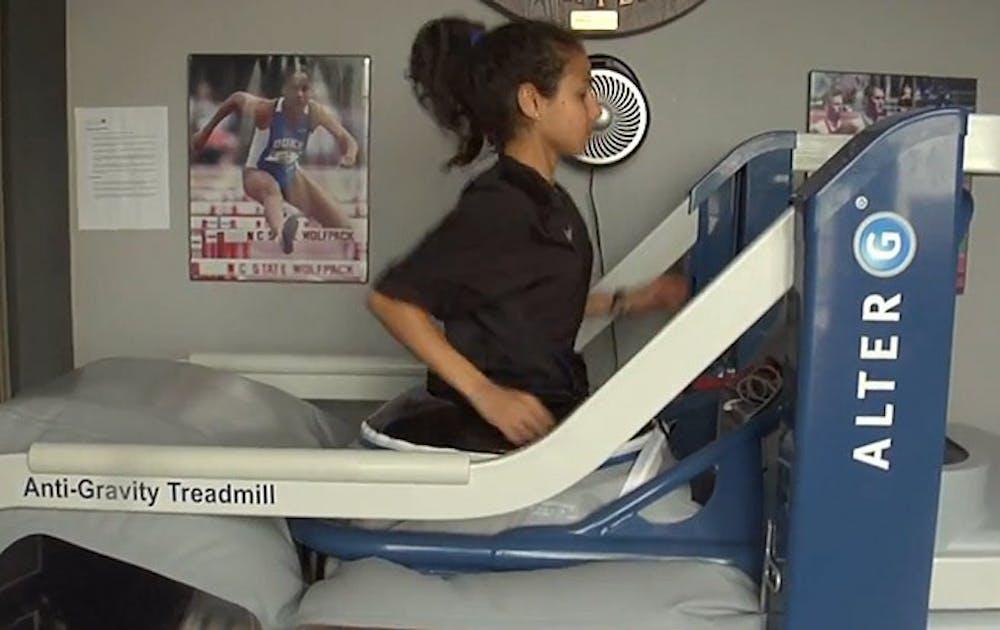Often the first piece of equipment associated with running, aside from shoes, is the treadmill. This past April, the cross-country program invested a large sum of money into this very piece of equipment.
This, however, is not any run-of-the-mill treadmill. It is the Alter G, a product that allows runners to defy gravity.
“It’s basically like running in a bubble,” cross-country runner Ashley Brasovan said. “I call it the bubble machine.”
Cross country runners are susceptible to injuries. The average Duke women’s runner covers upwards of 70 miles per week. Enter the Alter G, an anti-gravity treadmill, created for faster and less painful recovery from injury. The treadmill, which can cost as much as $75,000, has already made an impact on the durability of cross-country runners.
“So far the health of our team this year has been significantly improved compared to last year,” women’s cross-country head coach Kevin Jermyn said. “I think our fitness, as well, is certainly at a higher level.”
For runners, having an anti-gravity treadmill has allowed for a smoother transition back to the grind of cross-country racing.
“It feels so much better than running on land especially for me coming back from knee injury it hurts so much less,” cross-country runner Adrianne Soo said. “It just feels lighter, because you are lighter.”
Before running, cross-country team members must first put on special spandex shorts that zip into the treadmill. Once strapped in, it calibrates the amount of pressure to relieve based on the runner’s weight. From there, the Alter G inflates until the “bubble” is ready to go.
“I’ve been injured several times in my time here at Duke and [the Alter G] has allowed me to pretty much double my mileage,” Brasovan said. “I do 50 percent of my mileage on land and 50 percent on the Alter G at this point.”
Running on the Alter G has been a useful tool for rehabilitation, but running outside remains a top priority for the team.
“Generally we have [the team] run out on land first and then maybe they come back and supplement after because it does throw off their feel,” Jermyn said. “Most of their running, I would say, you know, anywhere from 75 percent to 100 percent of all their training is on land, so we’re using this in bits and pieces.”
Perhaps the most intriguing aspect of the Alter G is not the treadmill itself, but where it is physically located. The cross-country department decided to place the product in the middle of their office.
“It’s nice from my point of view, because my office is right next door,” Jermyn said. “When we were first looking around for a good place for the treadmill, this wasn’t the first one on my mind. But eventually it popped up and it just seemed like a really, really good fit.”
Brasovan thinks that while the Alter G is a great tool, she acknowledges that running on a treadmill cannot simulate the rush of running outside.
“It’s kind of like a little cave up here,” Brasovan said. “It’s not the most fun thing. You’re kind of just staring at a wall or listening to music the whole time you’re on it, but you kind of get used to it after a while.”
Despite the location, runners and coaches alike feel that the Alter G was a worthwhile investment.
“At first I really hated running on a treadmill and staring at that wall for a long time,” Soo said. “But we’re good friends now, me and the treadmill. It’s been great to have, I’m really glad we have it.”
Get The Chronicle straight to your inbox
Signup for our weekly newsletter. Cancel at any time.

